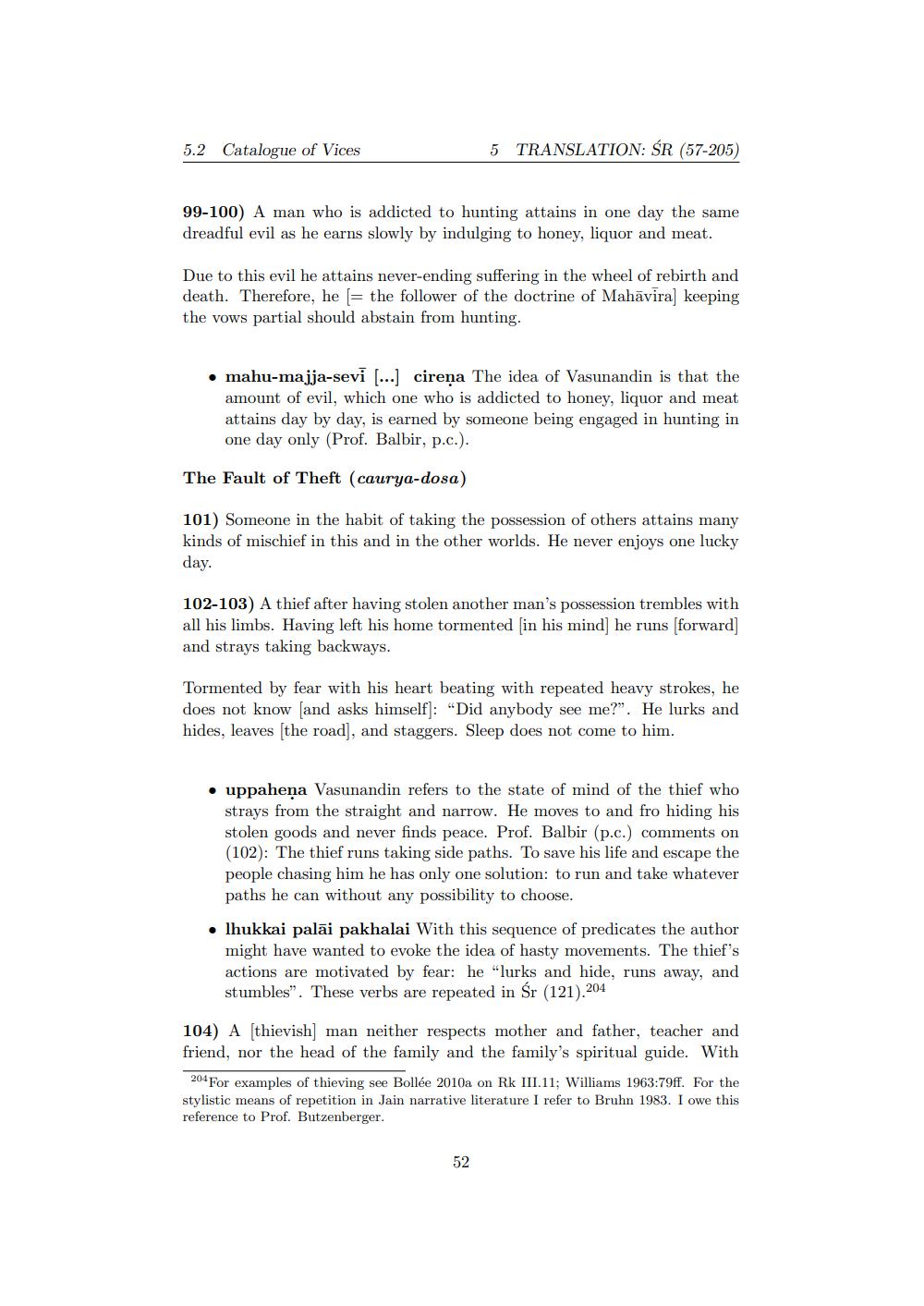________________
5.2
Catalogue of Vices
5 TRANSLATION: ŚR (57-205)
99-100) A man who is addicted to hunting attains in one day the same dreadful evil as he earns slowly by indulging to honey, liquor and meat.
Due to this evil he attains never-ending suffering in the wheel of rebirth and death. Therefore, he = the follower of the doctrine of Mahāvirakeeping the vows partial should abstain from hunting.
• mahu-majja-sevi [...] cirena The idea of Vasunandin is that the
amount of evil, which one who is addicted to honey, liquor and meat attains day by day, is earned by someone being engaged in hunting in one day only (Prof. Balbir, p.c.).
The Fault of Theft (caurya-dosa)
101) Someone in the habit of taking the possession of others attains many kinds of mischief in this and in the other worlds. He never enjoys one lucky
day.
102-103) A thief after having stolen another man's possession trembles with all his limbs. Having left his home tormented (in his mind) he runs (forward] and strays taking backways.
Tormented by fear with his heart beating with repeated heavy strokes, he does not know (and asks himself): "Did anybody see me?". He lurks and hides, leaves the road), and staggers. Sleep does not come to him.
uppahena Vasunandin refers to the state of mind of the thief who strays from the straight and narrow. He moves to and fro hiding his stolen goods and never finds peace. Prof. Balbir (p.c.) comments on (102): The thief runs taking side paths. To save his life and escape the people chasing him he has only one solution: to run and take whatever paths he can without any possibility to choose.
lhukkai palāi pakhalai With this sequence of predicates the author might have wanted to evoke the idea of hasty movements. The thief's actions are motivated by fear: he “lurks and hide, runs away, and stumbles". These verbs are repeated in Sr (121).204
104) A thievish) man neither respects mother and father, teacher and friend, nor the head of the family and the family's spiritual guide. With
204 For examples of thieving see Bollée 2010a on Rk III.11; Williams 1963:79ff. For the stylistic means of repetition in Jain narrative literature I refer to Bruhn 1983. I owe this reference to Prof. Butzenberger.




